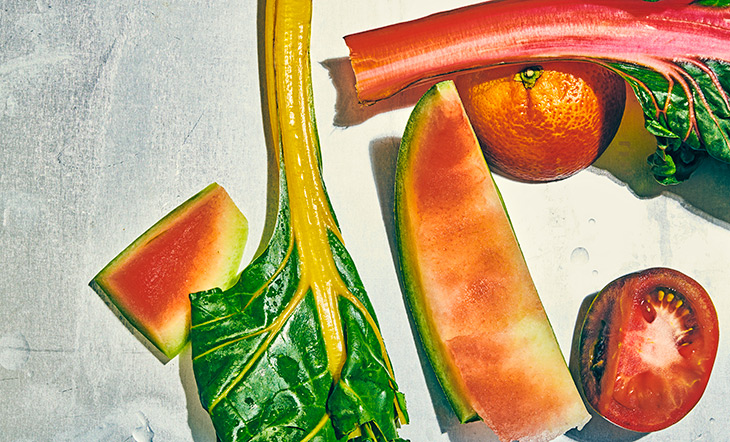Make the Most of Your Market Produce
Chef-approved tips for avoiding food waste this spring
Maggie BordenMay 29, 2019

We're barreling through spring and heading straight for summer, which means there's piles of produce on sale at farmers' markets and your local stores. When you're feeling flush with fruits and veggies, it can be hard to say no to an extra asparagus, or one more nectarine, but you certainly don't want any of that beautiful bounty to end up in the trash. With this in mind, we asked the scrap-savvy chefs behind the recipes in our cookbook, Waste Not, to offer up advice on getting the most out of your groceries. Check out their tips below:
- There is no need to chop off spring onion roots or carrot roots—they can be beautiful as an element in the dish and remind everyone that vegetables come from the earth.
- The tops of root vegetables such as carrots, turnips, and radishes are wonderfully bitter and are good cooked as a vegetable or in a soup.
- Roast wilting celery and carrots to bring them back to life, and then mix in scrambled eggs or top them with a fried egg for breakfast.
- Rather than peeling carrots, cucumbers, and other vegetables and fruits, leave the peels on and give them a good scrub to remove any dirt.
- If you do decide to peel, save the scraps for vegetable stocks or fruit jams.
- Save asparagus bottoms, carrot tops, mushroom stems, and other vegetable parts in freezer bags or containers for use in stocks, soups, and sauces.
- Before wilting herbs turn black, purée them with a little oil and store in ice cube trays or other containers in the freezer so that in the dead of winter, you can grab some bright greens from your freezer.
- When salad greens start to wilt, sauté them with some olive oil and garlic for a bright side dish.
- Sauté root vegetable tops and greens to serve as a side dish.
- To prolong the life of a bunch of ripe bananas for future use, place them on a sheet pan (skins intact) and bake in the oven for 15 minutes at 350°F until the skins are a deep black. Once cool, peel the roasted bananas and freeze in a ziplock bag. They won’t darken in the freezer, and they’re perfect for smoothies and banana bread.
- If you have just a few berries or strawberries you want to salvage before they turn, lay them out in a single layer on a small sheet pan or plate. Freeze uncovered overnight, then put them in a resealable plastic bag and return to the freezer. By freezing them separately, you can easily pluck them out just a few at a time and put them straight in the bottom of your bowl before topping with hot oatmeal, or add to a smoothie for more texture.
--

The James Beard Foundation's new cookbook, Waste Not: How to Get the Most from Your Food, offers up a host of delicious solutions to the pressing problem of food waste. Featuring 100 recipes from alumni of our Chefs Boot Camp for Policy and Change, Waste Not will teach you how to turn every root, bone, rind, and stem into an irresistible dish.
Waste Not: How to Get the Most from Your Food, published by Rizzoli, is on sale now. Order your copy today!
Maggie Borden is content manager at the James Beard Foundation. Find her on Instagram and Twitter.







